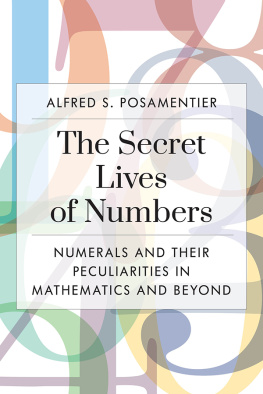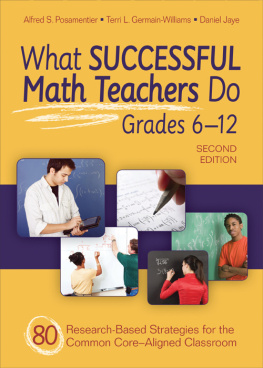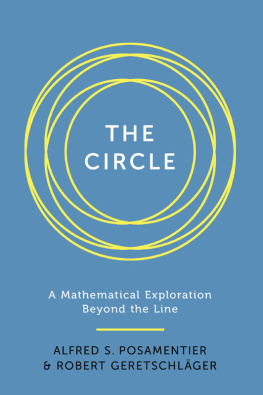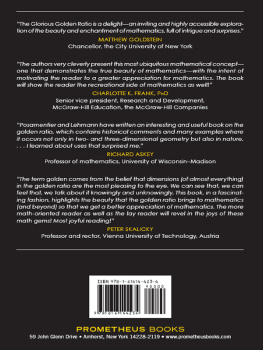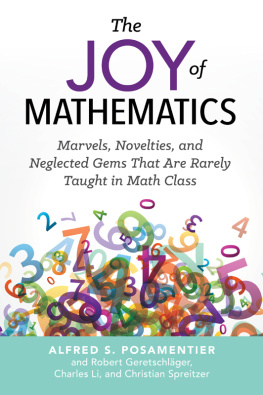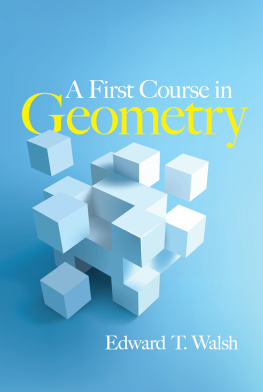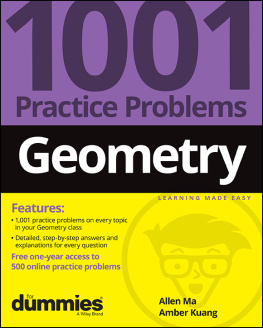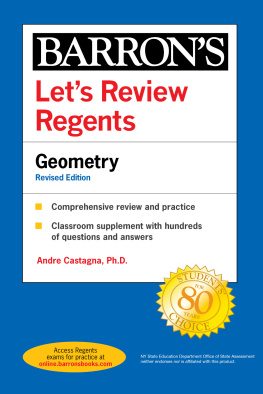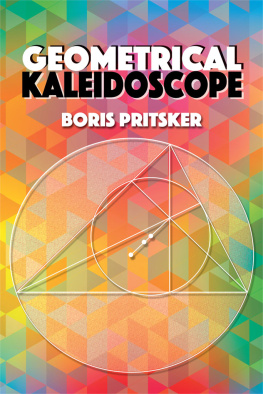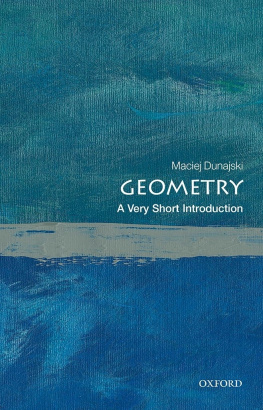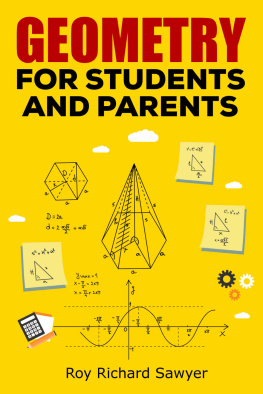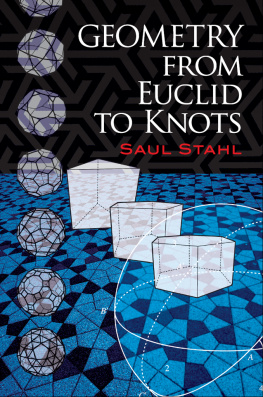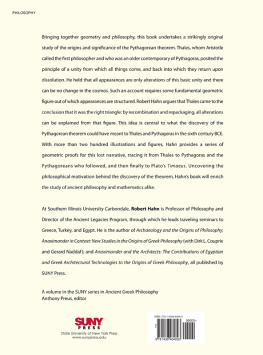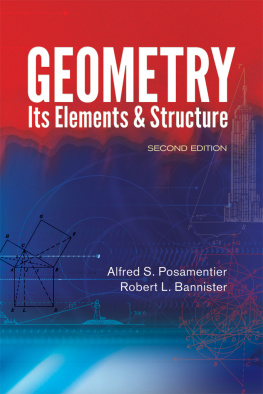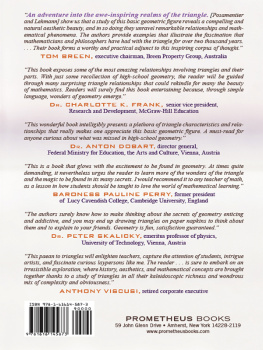Alfred S. Posamentier - Challenging Problems in Geometry
Here you can read online Alfred S. Posamentier - Challenging Problems in Geometry full text of the book (entire story) in english for free. Download pdf and epub, get meaning, cover and reviews about this ebook. year: 1996, publisher: Dover Publications, genre: Home and family. Description of the work, (preface) as well as reviews are available. Best literature library LitArk.com created for fans of good reading and offers a wide selection of genres:
Romance novel
Science fiction
Adventure
Detective
Science
History
Home and family
Prose
Art
Politics
Computer
Non-fiction
Religion
Business
Children
Humor
Choose a favorite category and find really read worthwhile books. Enjoy immersion in the world of imagination, feel the emotions of the characters or learn something new for yourself, make an fascinating discovery.

- Book:Challenging Problems in Geometry
- Author:
- Publisher:Dover Publications
- Genre:
- Year:1996
- Rating:3 / 5
- Favourites:Add to favourites
- Your mark:
- 60
- 1
- 2
- 3
- 4
- 5
Challenging Problems in Geometry: summary, description and annotation
We offer to read an annotation, description, summary or preface (depends on what the author of the book "Challenging Problems in Geometry" wrote himself). If you haven't found the necessary information about the book — write in the comments, we will try to find it.
Challenging Problems in Geometry — read online for free the complete book (whole text) full work
Below is the text of the book, divided by pages. System saving the place of the last page read, allows you to conveniently read the book "Challenging Problems in Geometry" online for free, without having to search again every time where you left off. Put a bookmark, and you can go to the page where you finished reading at any time.
Font size:
Interval:
Bookmark:
Challenging Problems in Geometry
ALFRED S. POSAMENTIER
Professor of Mathematics Education
The City College of the City University of New York
CHARLES T. SALKIND
Late Professor of Mathematics
Polytechnic University, New York
DOVER PUBLICATIONS, INC.
New York
Copyright
Copyright 1970, 1988 by Alfred S. Posamentier.
All rights reserved.
Bibliographical Note
This Dover edition, first published in 1996, is an unabridged, very slightly altered republication of the work first published in 1970 by the Macmillan Company, New York, and again in 1988 by Dale Seymour Publications, Palo Alto, California. For the Dover edition, Professor Posamentier has made two slight alterations in the introductory material.
Library of Congress Cataloging-in-Publication Data
Posamentier, Alfred S.
Challenging problems in geometry / Alfred S. Posamentier, Charles T. Salkind.
p. cm .
Originally published: New York: The Macmillan Company, 1970.
ISBN-13: 978-0-486-69154-1
ISBN-10: 0-486-69154-3
1. GeometryProblems, exercises, etc. I. Salkind, Charles T., 1898. II. Title.
QA459.P681996
516.0076dc20 | 95-52535 |
| CIP |
Manufactured in the United States by Courier Corporation
69154307
www.doverpublications.com
| Problems | Solution |
The challenge of well-posed problems transcends national boundaries, ethnic origins, political systems, economic doctrines, and religious beliefs; the appeal is almost universal. Why? You are invited to formulate your own explanation. We simply accept the observation and exploit it here for entertainment and enrichment.
This book is a new, combined edition of two volumes first published in 1970. It contains nearly two hundred problems, many with extensions or variations that we call challenges. Supplied with pencil and paper and fortified with a diligent attitude, you can make this material the starting point for exploring unfamiliar or little-known aspects of mathematics. The challenges will spur you on; perhaps you can even supply your own challenges in some cases. A study of these nonroutine problems can provide valuable underpinnings for work in more advanced mathematics.
This book, with slight modifications made, is as appropriate now as it was a quarter century ago when it was first published. The National Council of Teachers of Mathematics (NCTM), in their Curriculum and Evaluation Standards for High School Mathematics (1989), lists problem solving as its first standard, stating that mathematical problem solving in its broadest sense is nearly synonymous with doing mathematics. They go on to say, [problem solving] is a process by which the fabric of mathematics is identified in later standards as both constructive and reinforced.
This strong emphasis on mathematics is by no means a new agenda item. In 1980, the NCTM published An Agenda for Action. There, the NCTM also had problem solving as its first item, stating, educators should give priority to the identification and analysis of specific problem solving strategies . [and] should develop and disseminate examples of good problems and strategies. It is our intention to provide secondary mathematics educators with materials to help them implement this very important recommendation.
ABOUT THE BOOK
Challenging Problems in Geometry is organized into three main parts: Problems, Solutions, and Hints. Unlike many contemporary problem-solving resources, this book is arranged not by problem-solving technique, but by topic. We feel that announcing the technique to be used stifles creativity and destroys a good part of the fun of problem solving.
The problems themselves are grouped into two sections. , Further Investigations, presents topics not generally covered in the high school geometry course, but certainly within the scope of that audience. These topics lead to some very interesting extensions and enable the reader to investigate numerous fascinating geometric relationships.
Within each topic, the problems are arranged in approximate order of difficulty. For some problems, the basic difficulty may lie in making the distinction between relevant and irrelevant data or between known and unknown information. The sure ability to make these distinctions is part of the process of problem solving, and each devotee must develop this power by him- or herself. It will come with sustained effort.
In the Solutions part of the book, each problem is restated and then its solution is given. Answers are also provided for many but not all of the challenges. In the solutions (and later in the hints), you will notice citations such as (#23) and (Formula #5b). These refer to the definitions, postulates, and theorems listed in .
From time to time we give alternate methods of solution, for there is rarely only one way to solve a problem. The solutions shown are far from exhaustive, and intentionally so, allowing you to try a variety of different approaches. Particularly enlightening is the strategy of using multiple methods, integrating algebra, geometry, and trigonometry. Instances of multiple methods or multiple interpretations appear in the solutions. Our continuing challenge to you, the reader, is to find a different method of solution for every problem.
The third part of the book, , offers suggestions for each problem and for selected challenges. Without giving away the solution, these hints can help you get back on the track if you run into difficulty.
USING THE BOOK
This book may be used in a variety of ways. It is a valuable supplement to the basic geometry textbook, both for further explorations on specific topics and for practice in developing problem-solving techniques. The book also has a natural place in preparing individuals or student teams for participation in mathematics contests. Mathematics clubs might use this book as a source of independent projects or activities. Whatever the use, experience has shown that these problems motivate people of all ages to pursue more vigorously the study of mathematics.
Very near the completion of the first phase of this project, the passing of Professor Charles T. Salkind grieved the many who knew and respected him. He dedicated much of his life to the study of problem posing and problem solving and to projects aimed at making problem solving meaningful, interesting, and instructive to mathematics students at all levels. His efforts were praised by all. Working closely with this truly great man was a fascinating and pleasurable experience.
Alfred S. Posamentier
1996
A strategy for attacking a problem is frequently dictated by the use of analogy. In fact, searching for an analogue appears to be a psychological necessity. However, some analogues are more apparent than real, so analogies should be scrutinized with care. Allied to analogy is structural similarity or pattern. Identifying a pattern in apparently unrelated problems is not a common achievement, but when done successfully it brings immense satisfaction.
Failure to solve a problem is sometimes the result of fixed habits of thought, that is, inflexible approaches. When familiar approaches prove fruitless, be prepared to alter the line of attack. A flexible attitude may help you to avoid needless frustration.
Here are three ways to make a problem yield dividends:
(1) The result of formal manipulation, that is, the answer, may or may not be meaningful; find out! Investigate the possibility that the answer is not unique. If more than one answer is obtained, decide on the acceptability of each alternative. Where appropriate, estimate the answer in advance of the solution. The habit of estimating in advance should help to prevent crude errors in manipulation.
Next pageFont size:
Interval:
Bookmark:
Similar books «Challenging Problems in Geometry»
Look at similar books to Challenging Problems in Geometry. We have selected literature similar in name and meaning in the hope of providing readers with more options to find new, interesting, not yet read works.
Discussion, reviews of the book Challenging Problems in Geometry and just readers' own opinions. Leave your comments, write what you think about the work, its meaning or the main characters. Specify what exactly you liked and what you didn't like, and why you think so.

